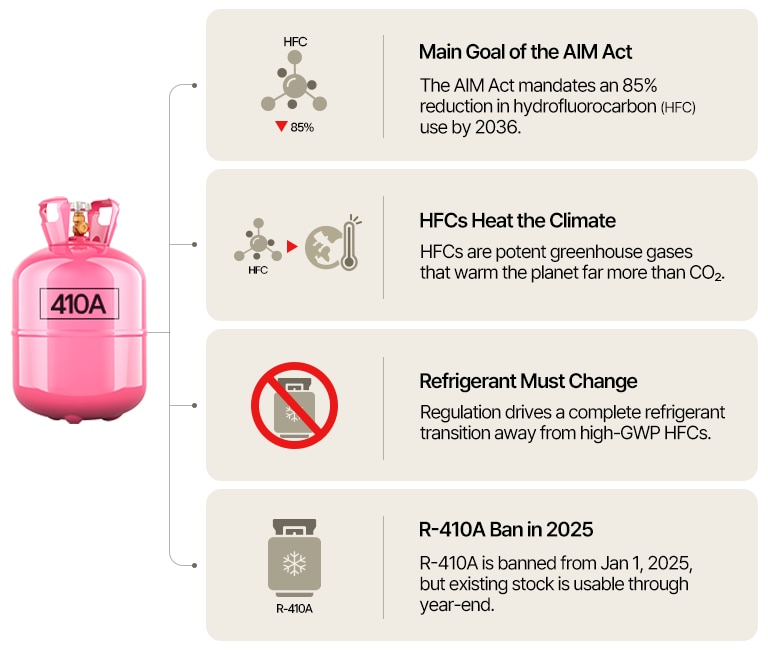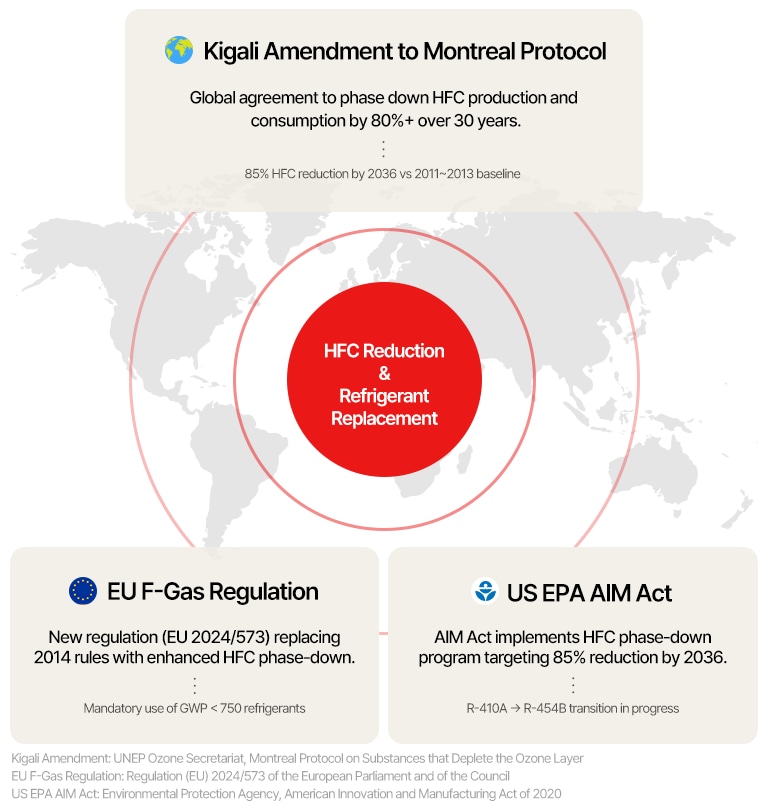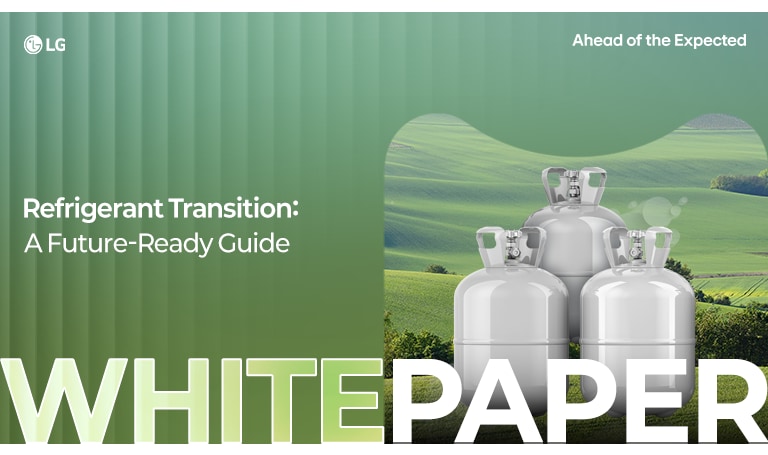We use cookies, including cookies from third parties, to enhance your user experience and the effectiveness of our marketing activities. These cookies are performance, analytics and advertising cookies, please see our Privacy and Cookie policy for further information. If you agree to all of our cookies select “Accept all” or select “Cookie Settings” to see which cookies we use and choose which ones you would like to accept.
Why R-410A is being Replaced?
R-410A has been a go-to refrigerant for air conditioner and heat pump in homes and small business, valued for its strong cooling power and ozone-friendly properties, replacing the older R-22. As of 2023, it held about 40% of the global refrigerant market, especially in the UK. and parts of Asia where air conditioning use is high.1) But its high global warming potential of 2088 makes it harmful to the climate, driving the need for eco-conscious options.
The UK Standard Act mandates an 85% reduction in hydrofluorocarbon (HFC) use by 2036, targeting these high-GWP refrigerants that trap heat in the atmosphere far more effectively than CO2.2) This regulatory push necessitates a complete refrigerant changeover, with R-410A banned in new systems starting January 1, 2025, though existing inventory can be used through the end of 2025.
R-454B & R-32 Refrigerants: A Comparative Overview
As the U.K. HVAC industry transitions away from R-410A, two refrigerants have emerged as leading alternatives: R-454B and R-32. Both offer significant environmental improvements over the phased-out R-410A, but each distinct characteristics and market dynamics.
a. Environmental Impact Comparison
R-454B has a Global Warming Potential (GWP) of approximately 466, while R-32 has a GWP of 675. Both are substantially lower than R-410A’s GWP of 2,088, making them more sustainable options. R-454B is a blend of HFC and HFO components, while R-32 is a pure HFC refrigerant.
b. Safety Classifications
Both R-454B and R-32 are considered mildly flammable, so they need similar safety measures like leak detectors and good ventilation. However, because their chemical makeup is different, the way they’re handled and serviced isn’t exactly the same.
c. Performance and Efficiency
R-32 offers higher energy efficiency and lower GWP compared to R-410A, and is cheaper to manufacture and purchase.1) R-454B provides comparable cooling performance to R-410A with effective system compatibility.2)
1) https://www.callmattioni.com/blog/t-navigating-refrigerant-landscape/
2) https://www.climatesystems.net/blog/carrier-r-454b/
d. Market Availability in the U.K.
While R-454B has gained significant attention as an R-410A replacement. R-32 has maintained more stable availability and pricing, making it a practical alternative for HVAC contractors and consumers seeking reliable access to refrigerants with a lower environmental impact than R-410A.
Global Regulatory Alignment
The U.K. shift from R-410A to R-454B reflects a broader global movement toward relatively more sustainable refrigerant. Like the AIM Act's HFC phase-down, the EU's F-Gas Regulation has already banned high-GWP refrigerants like R-410A (GWP 2088) in new systems, requiring alternatives with GWP below 750 such as R-454B (GWP ~466), R-32 (GWP 675) or R-290 (propane, GWP 3).1)
1) https://climate.ec.europa.eu/eu-action/fluorinated-greenhouse-gases/climate-friendly-alternatives-f-gases/air-conditioning_en
This international regulatory alignment accelerates industry-wide innovation and creates economies of scale for low-GWP refrigerant production. As governments worldwide update safety codes to support A2L refrigerants like R-454B and R-32, manufacturers can develop standardized solutions that meet multiple regional requirements.
LG HVAC’s Low-GWP Refrigerant Strategy
As the HVAC industry navigates the transition to sustainable refrigerants, LG HVAC has established itself as a leader in low-GWP refrigerant technologies. LG HVAC’s proactive approach demonstrates environmental responsibility and regulatory compliance across global markets.
LG's refrigerant leadership is demonstrated by its proactive preparation for the North American market. To comply with upcoming regulations and key standards from ASHRAE (American Society of Heating, Refrigerating and Air-Conditioning Engineers) and UL (Underwriters Laboratories), LG HVAC is expanding its R-32 product coverage. This includes developing solutions across its R-32 VRF, Inverter Scroll Chiller (ISC), and heat pump lineups to meet the market's needs.
This history of anticipating regulatory changes and delivering innovative solutions positions LG to respond effectively to evolving market demands, ensuring customers receive sustainable, high-performance HVAC solutions regardless of regional refrigerant requirements.
Check Out Refrigerant White Paper
LG white paper titled 'Refrigerant Transition: A Future-Ready Guide' with tanks on green field background.
Related Articles
Related Articles
More about LG HVAC
Products and solutions may vary according to country and operating conditions.
*Products and solutions may vary according to country and operating conditions.








